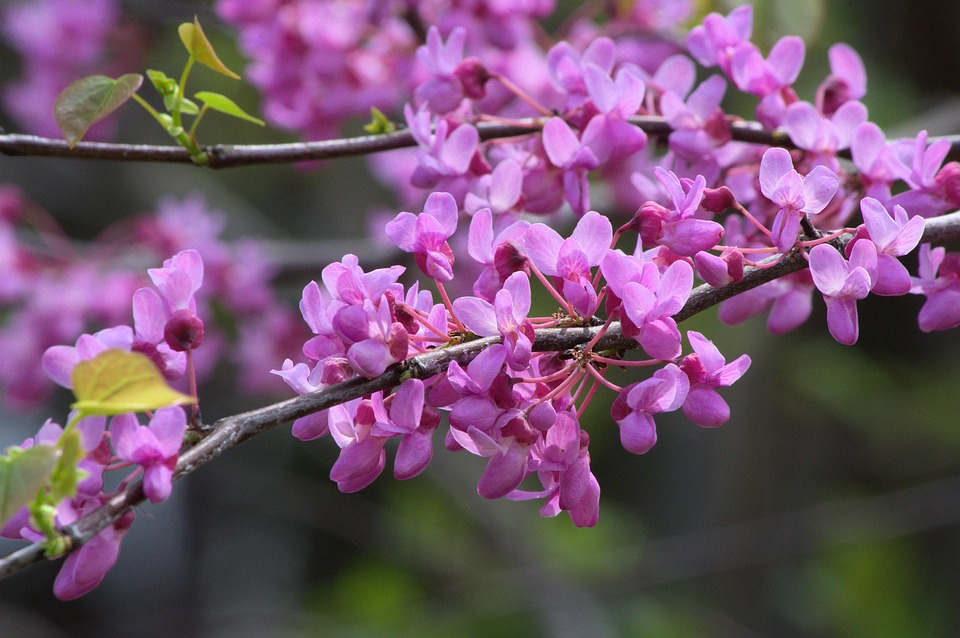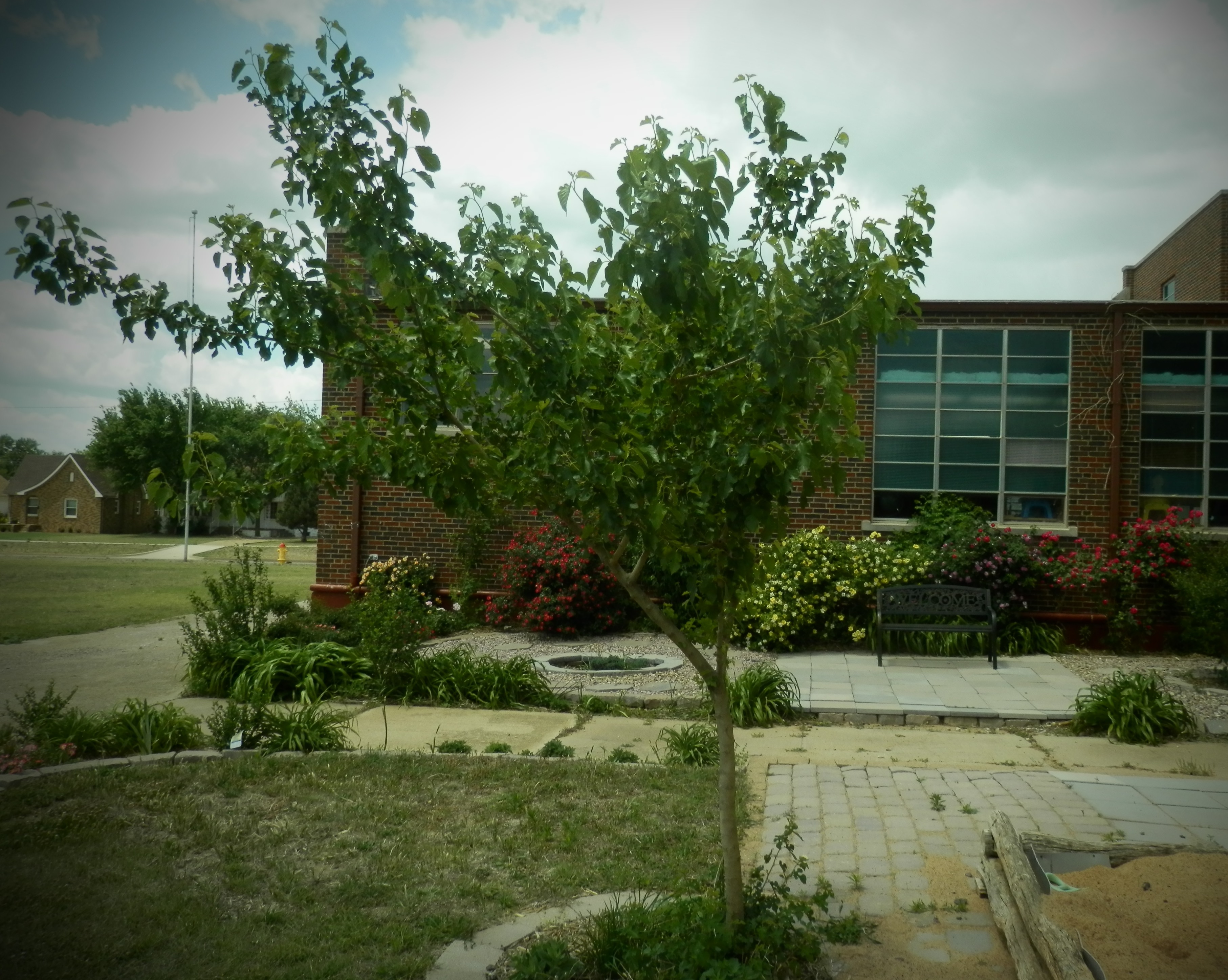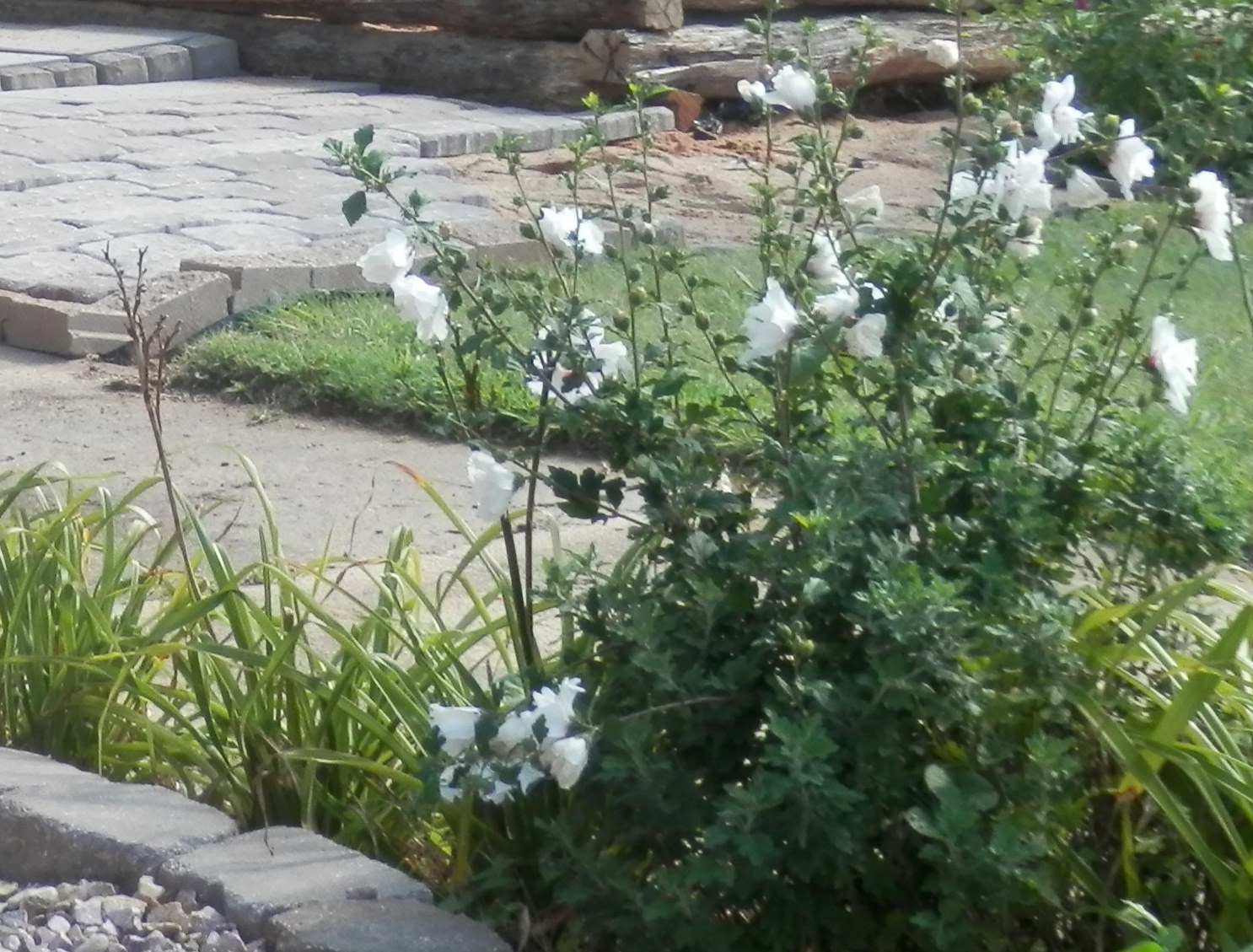The Trees
The Oklahoma Redbud
As they rolled across the country in their wagons, headed for the starting line in 1889, hopefuls from Missouri, Kentucky, and points south would have been grateful to see the swelling buds of the familiar Eastern Redbud, but those who ran into what would become Kingfisher County were in for a disappointment. Kingfisher and Garfield Counties are two of the very few counties in Oklahoma that have no native population of redbud trees.
But, just as we have done here in the Territorial Garden, territorial folks quickly imported this hardy native and christened it the "Oklahoma Redbud," before making it the state tree.


The Texas Whitebud
Texas, you say? Texas? Well, yes. There were wild Texas cowboys from across the river that had trailed cattle on the old Chisholm Trail and remembered the good grassland around Pat Hennessey's grave site. When they made the Run, they determined to "run for Hennessey" long before the town had its name. So we have Texas roots here and this Texas Whitebud feels right at home.
The Mulberry
J.B. Thoburn, in a 1913 article for the Oklahoma Farm Journal recommended the mulberry as a windbreak tree for the sandy farms of the prairie. As a tree, the mulberry was ineffective, breaking in the fierce winds, but it excelled as a hedge. Birds loved the fruit and carried seeds across the state, leaving Oklahoma with a mulberry population that, though not native, sprang up freely in both urban and rural settings.
This tree is a bird-brought volunteer.

Althea Rose of Sharon
Technically, a shrub of the mallow family, seeds of Hibiscus Syriacus traveled in fruit jars and envelopes across the territory, a favorite small tree of the early pioneers. Tough, impossible to remove once settled, adaptable to both clay and sand, completely self-sufficient, this Asia native earned its place on the prairie.
Country of origin meant less to the '89er immigrants then performance on the land, and this small shrub sets deep roots and performs.


The River Birch
Down by the riverside, the branches brush the sky and shade the sun-baked sand. This native Oklahoma tree was a welcome and welcoming sight along the streams and banks of the territory. In the dry, difficult climate of North Central Oklahoma, low, wet places are few, but where the water pools, the birch is comfortably at home. Once growing in the right environment, the tree can live as long as 50 years.
In the Territorial Garden, there is a low space where all the water gathers from the barrel roof of the auditorium, and this birch is thriving there and beginning to provide shade for visitors.
This territorial survivor may not be anything like other dryland trees; nonetheless, it has found its niche and made its home and is here to stay.
